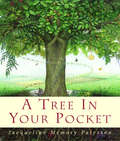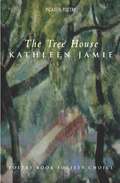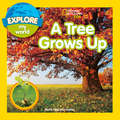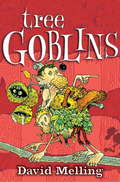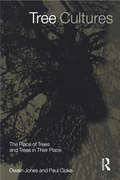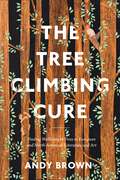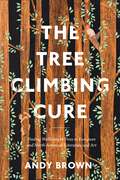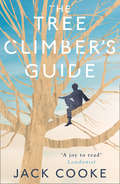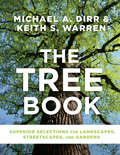- Table View
- List View
Tree Islands of the Everglades
by Fred H. Sklar Arnold Van Der ValkPREFACE Within the Florida Everglades, tree islands, which cover only a small percentofthis ecosystem, historically have provided essential habitat for a wide variety ofterrestrial and amphibious plants, birds, and animals. These tree islands, however, have been one ofits least studied features. Because of their less flood tolerant vegetation, tree islands are one ofthe most sensitive components ofthe Everglades to changes in hydrology, and many tree islands have been lost during periods when water levels have been abnormally high or low. Their sensitivity to water level changes makes tree islands potentially one ofthe best and surest measures ofthe overall hydrologic health of the Everglades. Consequently, the maintenance of healthy, functioning tree islands and the restoration ofthose that have been lost will be an important performance measures that will be used tojudge the success ofthe Comprehensive Everglades Restoration Plan (CERP). A symposium, Tree Islands ofthe Everglades, was held on July 14 and 15, 1998 at Florida Atlantic University, Boca Raton, Florida. It was sponsored by Florida Center for Environmental Studies and the South Florida WaterManagement District. This was the first scientific meeting ever devoted to tree islands. The organizers of this symposium were Drs. Arnold van der Valk, Florida Center for Environmental Studies and Iowa State University, Fred Sklar, South Florida Water Management District, and Wiley Kitchens, United States Geological Survey.
A Tree in Your Pocket
by Jacqueline Memory PatersonBe inspired by the myth, magic and wisdom of trees This ebook edition of Tree Wisdom explores the world of trees.
The Tree House
by Kathleen JamieFor several years now, Kathleen Jamie's work has addressed two principal concerns: how we negotiate with the natural world, and how we should define our conduct within family and society. In The Tree House Jamie argues - as Burns did before her - for an engagement of the whole being through a kind of practical earthly spirituality. These often startling encounters with animals, birds, and other humans propose a way of living which recognises the earth as home to many different consciousnesses -- and a means of authentic engagement with ‘this, the only world’. Together they form one of the most powerful poetic statements of recent years.
Tree Harvesting Techniques (Forestry Sciences #15)
by A. Staaf N.A. WikstenThe introduction of chain saws and tractors in the early 1950's marked the beginning of a change in tree harvesting techniques from the old manual methods to mechanized operations. It was followed by a rapid evolution both technically and systematically. Hence, the requirements for improved know ledge of operational efficiency also increased. Changing relations between Man, machines and environment brought about new experiences and awareness of a physiological and ergonomic nature. Improved knowledge of both machine technology and planning of work on a small or large scale has grown increa singly important for an efficient utilization of expensive machines and other equipment. The need for a textbook on tree harvesting techniques including expe riences made in recent years is enhanced. The book presented here is prima rily based on lectures given on the subject of Forest Techniques at the Faculty of Forestry at the Swedish University of Agricultural Sciences and after modifications also at the University of Nairobi (Kenya). Thus, the book is written primarily for students at the faculties and institutes of forestry. However, it is also useful for persons actively occupied in forest operations. The presentation of this book in its original Swedish version in 1972 created a considerable interest in the preparation of a condensed edition in English. Thus interest has been expressed in Finland, Norway, Holland, Canada, U.S.A., Brazil, Japan, Poland, Scotland and Yugoslavia.
A Tree Grows Up (Explore My World)
by National Geographic Kids Marfé Ferguson DelanoIn this charming picture book, curious little kids will learn all about how an acorn grows up to be an oak tree.
Tree Goblins: Book 2 (Goblins)
by David MellingBeware - there are goblins living among us! Within these pages lies a glimpse into their secret world. But read quickly, and speak softly, in case the goblins spot you...When tree goblins Butterfingers and Mildew lose their egglets, they must enlist the help of Two-Conks the tree and fellow goblin Drip, the inventor of Sock-Sucking. Can the gang find the baby egglets before a snootle-pig does?A riotous, laugh-out-loud funny series for younger readers from the bestselling author of Hugless Douglas, David Melling.
Tree Glee: How and Why Trees Make Us Feel Better
by Cheryl RickmanTrees and humans essentially want the same thing – to live good, happy, purposeful lives and to flourish. We are inextricably bound.Trees provide us with the necessities of life – they clean the air we breathe, fill us with awe as we walk through forests and provide timber for the houses we live in, yet there are deeper reasons for our arboreal admiration that go beyond utility and beauty.Tree Glee looks at the psychology behind our fascination with trees, examining exactly how they comfort, restore and revitalise us and what we can learn from the wisdom of woodlands to improve our own wellbeing. It explores the importance of trees in our leafy suburbs and urban landscapes, sharing magical stories of remarkable ancient trees across the globe and inviting readers to reflect on their own personal 'treestory'.Featuring captivating photos and with chapters on forest bathing and nature therapy, woodland wellbeing and tree mythology Tree Glee explores how by deepening our appreciation and connection to trees and by celebrating and protecting them, we can flourish together.
Tree Fruit Production
by Benjamin J. TeskeyThis is a revised and updated edition of the book Tree Fruit Production, first published in 1959 and extensively revised in the second edition in 1972. Considerable advances have been made in recent years in the scientific production and handling of deciduous tree fruits in North America. This third edition brings together in up-to-date usable text book form the essence of pertinent research and practical experience on the subject. Although the principles involved in the different operations of orchard management, such as pruning, soil management, fruit thin ning, and harvesting remain constant, practices and techniques have been undergoing considerable change. Economic and social changes have been brought to bear in altering the approach to such aspects of pomology as tree size, plant density, mechanical harvesting, pest control and irrigation. Greatly increased costs of production have swung the emphasis of attention toward the wider use of organic chemicals in the orchard. Growth regulating substances are finding a place in the orchard, not only for fruit thinning, preharvest drop control and weed suppression, but also for other purposes such as promotion of early flowering, tree train ing, pruning and the advancement and extension of the harvest season. The trend toward the smaller, more easily and economically managed apple tree which began slowly some three or more decades ago and increased rapidly in subsequent years is now complete.
The Tree Drops a Leaf
by Ruby M. AyresCould people change in only 28 days? Ruby M Ayres can always find something to bring out of her treasure house. The Tree Drops a Leaf is a charming romantic tale dealing with charming romantic people.
Tree Cultures: The Place of Trees and Trees in Their Place
by Paul Cloke Owain JonesThe relationship between nature and culture has become a popular focus in social science, but there have been few grounded accounts of trees. Providing shelter, fuel, food and tools, trees have played a vital role in human life from the earliest times, but their role in symbolic expression has been largely overlooked. For example, trees are often used to express nationalistic feelings. Germans drew heavily on tree and forest imagery in nation-building, and the idea of 'hearts of oak' has been central to concepts of English identity. Classic scenes of ghoulish trees coming to life and forests closing in on unsuspecting passers-by commonly feature in the media. In other instances, trees are used to represent paradisical landscapes and symbolize the ideologies of conservation and concern for nature. Offering new theoretical ideas, this book looks at trees as agents that co-constitute places and cultures in relationship with human agency. What happens when trees connect with human labour, technology, retail and consumption systems? What are the ethical dimensions of these connections? The authors discuss how trees can affect and even define notions of place, and the ways that particular places are recognized culturally. Working trees, companion trees, wild trees and collected or conserved trees are considered in relation to the dynamic politics of conservation and development that affect the values given to trees in the contemporary world. Building on the growing field of landscape study, this book offers rich insights into the symbolic and practical roles of trees. It will be vital reading for anyone interested in the anthropology of landscape, forestry, conservation and development, and for those concerned with the social science of nature.
Tree Cultures: The Place of Trees and Trees in Their Place
by Paul Cloke Owain JonesThe relationship between nature and culture has become a popular focus in social science, but there have been few grounded accounts of trees. Providing shelter, fuel, food and tools, trees have played a vital role in human life from the earliest times, but their role in symbolic expression has been largely overlooked. For example, trees are often used to express nationalistic feelings. Germans drew heavily on tree and forest imagery in nation-building, and the idea of 'hearts of oak' has been central to concepts of English identity. Classic scenes of ghoulish trees coming to life and forests closing in on unsuspecting passers-by commonly feature in the media. In other instances, trees are used to represent paradisical landscapes and symbolize the ideologies of conservation and concern for nature. Offering new theoretical ideas, this book looks at trees as agents that co-constitute places and cultures in relationship with human agency. What happens when trees connect with human labour, technology, retail and consumption systems? What are the ethical dimensions of these connections? The authors discuss how trees can affect and even define notions of place, and the ways that particular places are recognized culturally. Working trees, companion trees, wild trees and collected or conserved trees are considered in relation to the dynamic politics of conservation and development that affect the values given to trees in the contemporary world. Building on the growing field of landscape study, this book offers rich insights into the symbolic and practical roles of trees. It will be vital reading for anyone interested in the anthropology of landscape, forestry, conservation and development, and for those concerned with the social science of nature.
Tree Crops: Harvesting Cash from the World's Important Cash Crops
by Kodoth Prabhakaran NairThis book paints a wide canvas of the immense global economic potential of ten most important cash generating crops spread over Asia, Africa and Latin America, namely, Arecanut, Cashew Nut, Coconut, Cinchona, Cocoa, Coffee, Tea, Oil Palm, Rubber and Wattle. It provides a cross-sectoral, multi-scale assessment of the status of these crops, from seed to dining table, an invaluable treatise on the subject. Structured to be an invaluable tool for the inquisitive researcher, an ardent student, and, an insightful policy maker.
Tree-Crop Interactions: Agroforestry in a Changing Climate
by Dennis DennisThis new edition provides an update on the considerable amount of evidence on tree-crop interactions which has accumulated during the last two decades, especially on the more complex multi-strata agroforestry systems, which are typical of the humid tropics. In addition three new chapters have been added to describe the new advances in the relationship between climate change adaptation, rural development and how trees and agroforestry will contribute to a likely reduction in vulnerability to climate change in developing countries
Tree Climbing Robot: Design, Kinematics and Motion Planning (Springer Tracts in Advanced Robotics #78)
by Tin Lun Lam Yangsheng XuClimbing robot is a challenging research topic that has gained much attention from researchers. Most of the robots reported in the literature are designed to climb on manmade structures, but seldom robots are designed for climbing natural environment such as trees. Trees and manmade structures are very different in nature. It brings different aspects of technical challenges to the robot design. In this book, you can find a collection of the cutting edge technologies in the field of tree-climbing robot and the ways that animals climb. It provides a valuable reference for robot designers to select appropriate climbing methods in designing tree-climbing robots for specific purposes. Based on the study, a novel bio-inspired tree-climbing robot with several breakthrough performances has been developed and presents in this book. It is capable of performing various actions that is impossible in the state-of-the-art tree-climbing robots, such as moving between trunk and branches. This book also proposes several approaches in autonomous tree-climbing, including the sensing methodology, cognition of the environment, path planning and motion planning on both known and unknown environment.
The Tree Climbing Cure: Finding Wellbeing in Trees in European and North American Literature and Art (Environmental Cultures)
by Andy BrownOur relationship with trees is a lengthy, complex one. Since we first walked the earth we have, at various times, worshiped them, felled them and even talked to them. For many of us, though, our first memories of interacting with trees will be of climbing them.Exploring how tree climbers have been represented in literature and art in Europe and North America over the ages, The Tree Climbing Cure unpacks the curative value of tree climbing, examining when and why tree climbers climb, and what tree climbing can do for (and say about) the climber's mental health and wellbeing.Bringing together research into poetry, novels, and paintings with the science of wellbeing and mental health and engaging with myth, folklore, psychology and storytelling, Tree Climber also examines the close relationship between tree climbing and imagination, and questions some longstanding, problematic gendered injunctions about women climbing trees. Discussing, among others, the literary works of Margaret Atwood; Charlotte Bronte; Geoffrey Chaucer; Angela Carter; Kiran Desai; and J.R.R. Tolkien, as well as work by artists such as Peter Doig; Paula Rego; and Goya, this book stands out as an almost encyclopedic examination of cultural representations of this quirky and ultimately restorative pastime.
The Tree Climbing Cure: Finding Wellbeing in Trees in European and North American Literature and Art (Environmental Cultures)
by Andy BrownOur relationship with trees is a lengthy, complex one. Since we first walked the earth we have, at various times, worshiped them, felled them and even talked to them. For many of us, though, our first memories of interacting with trees will be of climbing them.Exploring how tree climbers have been represented in literature and art in Europe and North America over the ages, The Tree Climbing Cure unpacks the curative value of tree climbing, examining when and why tree climbers climb, and what tree climbing can do for (and say about) the climber's mental health and wellbeing.Bringing together research into poetry, novels, and paintings with the science of wellbeing and mental health and engaging with myth, folklore, psychology and storytelling, Tree Climber also examines the close relationship between tree climbing and imagination, and questions some longstanding, problematic gendered injunctions about women climbing trees. Discussing, among others, the literary works of Margaret Atwood; Charlotte Bronte; Geoffrey Chaucer; Angela Carter; Kiran Desai; and J.R.R. Tolkien, as well as work by artists such as Peter Doig; Paula Rego; and Goya, this book stands out as an almost encyclopedic examination of cultural representations of this quirky and ultimately restorative pastime.
The Tree Climber’s Guide
by Jack Cooke‘After I finished this book I alarmed my family by going into the garden and climbing the apple tree.’ – Damian Whitworth, The Times
Tree by Tree: Saving North America's Eastern Forests
by Scott J. MeinersTree by Tree is a warning and a toolkit for the future of forest recovery. Scott J. Meiners investigates the critical biological threats endangering tree species native to the forests of eastern North America, providing a needed focus on this plight. Meiners suggests that if we are to save our forests, the first step is to recognize the threats in front of us. Meiners focuses on five familiar trees—the American elm, the American chestnut, the eastern hemlock, the white ash, and the sugar maple—and shares why they matter economically, ecologically, and culturally. From outbreaks of Dutch elm disease to infestations of emerald ash borers, Meiners highlights the challenges that have led or will lead to the disappearance of these trees from forests. In doing so, he shows us how diversity loss often disrupts intricately balanced ecosystems and how vital it is that we pay more attention to massive changes in forest composition.With practical steps for the conservation of native tree species, Tree by Tree offers the inspiration and insights we need to begin saving our forests.
Tree Breeding and Genetics in New Zealand
by C.J.A. Shelbourne Mike CarsonDothistroma pini changed New Zealand commercial forestry dramatically. Tree breeding became concentrated on a very few species and development of selection methods and breeding strategies changed in response to the new challenges. Tree-Breeding and Genetics in New Zealand provides a critical historical account of the work on provenance research and tree breeding, often with the wisdom of hindsight, and it tracks the development of breeding strategy, especially for P. radiata, Douglas-fir and the most important eucalypt species, E. regnans, E. fastigata and E. nitens. The book is a compendium of abstracts and summaries of all publications and reports on tree improvement in New Zealand since the early 1950s, with added critical comment by the author on much of the work. It is intended for other tree breeders internationally, for interested NZ foresters and for graduate students studying genetics and tree breeding.
Tree Breeding: Principles and Strategies (Monographs on Theoretical and Applied Genetics #11)
by G. Namkoong H. C. Kang J. S. BrouardIt has become apparent, during discussions with students and colleagues in forest genetics, that a universal concern is the achievement of diverse goals of forestry from fiber production in industrial as well as farm forests to conserving forest ecosystems. Although we generally have several breeding methods available and several species to breed, we seek to satisfy multiple-use goals on diverse sites by management techniques that at best can only partially control edaphic environmental variation. The dominant approach, which was agriculturally motivated, has involved inten sive effort with complicated breeding plans on single species for uniform adaptability and single-product plantations. However, this is obviously neither the only, nor necessarily the best, solution for the genetic management of tree species, and thus our intent in this volume is to develop ways to achieve multiple objectives in tree breeding. We include an array of breeding plans from simple iterated designs to sets of multiple populations capable of using gene actions for different traits in different environments for uncertain futures. The presentation is organized around the development of breeding from single-to multiple-option plans, from single to multiple traits, from single to mUltiple environ ments, and from single to multiple populations. However, it is not a complete "How To" book, and includes neither exercises nor instructions on data handling. It also does not include discussion of all modes of reproduction and inheritance encountered in plants.
The Tree Book: Superior Selections for Landscapes, Streetscapes, and Gardens
by Michael A. Dirr Keith S. WarrenFrom two of the foremost names in horticulture, comes the authoritative guide for the best tree species and cultivars for the landscapes of today.
Tree Biotechnology
by Kishan Gopal Ramawat Jean-Michel Mérillon M. R. AhujaForest trees cover 30% of the earth's land surface, providing renewable fuel, wood, timber, shelter, fruits, leaves, bark, roots, and are source of medicinal products in addition to benefits such as carbon sequestration, water shed protection, and habitat for 1/3 of terrestrial species. However, the genetic analysis and breeding of trees has lagged
Tree-Based Methods for Statistical Learning in R (Chapman & Hall/CRC Data Science Series)
by Brandon M. GreenwellTree-based Methods for Statistical Learning in R provides a thorough introduction to both individual decision tree algorithms (Part I) and ensembles thereof (Part II). Part I of the book brings several different tree algorithms into focus, both conventional and contemporary. Building a strong foundation for how individual decision trees work will help readers better understand tree-based ensembles at a deeper level, which lie at the cutting edge of modern statistical and machine learning methodology. The book follows up most ideas and mathematical concepts with code-based examples in the R statistical language; with an emphasis on using as few external packages as possible. For example, users will be exposed to writing their own random forest and gradient tree boosting functions using simple for loops and basic tree fitting software (like rpart and party/partykit), and more. The core chapters also end with a detailed section on relevant software in both R and other opensource alternatives (e.g., Python, Spark, and Julia), and example usage on real data sets. While the book mostly uses R, it is meant to be equally accessible and useful to non-R programmers. Consumers of this book will have gained a solid foundation (and appreciation) for tree-based methods and how they can be used to solve practical problems and challenges data scientists often face in applied work. Features: Thorough coverage, from the ground up, of tree-based methods (e.g., CART, conditional inference trees, bagging, boosting, and random forests). A companion website containing additional supplementary material and the code to reproduce every example and figure in the book. A companion R package, called treemisc, which contains several data sets and functions used throughout the book (e.g., there’s an implementation of gradient tree boosting with LAD loss that shows how to perform the line search step by updating the terminal node estimates of a fitted rpart tree). Interesting examples that are of practical use; for example, how to construct partial dependence plots from a fitted model in Spark MLlib (using only Spark operations), or post-processing tree ensembles via the LASSO to reduce the number of trees while maintaining, or even improving performance.
Tree-Based Methods for Statistical Learning in R (Chapman & Hall/CRC Data Science Series)
by Brandon M. GreenwellTree-based Methods for Statistical Learning in R provides a thorough introduction to both individual decision tree algorithms (Part I) and ensembles thereof (Part II). Part I of the book brings several different tree algorithms into focus, both conventional and contemporary. Building a strong foundation for how individual decision trees work will help readers better understand tree-based ensembles at a deeper level, which lie at the cutting edge of modern statistical and machine learning methodology. The book follows up most ideas and mathematical concepts with code-based examples in the R statistical language; with an emphasis on using as few external packages as possible. For example, users will be exposed to writing their own random forest and gradient tree boosting functions using simple for loops and basic tree fitting software (like rpart and party/partykit), and more. The core chapters also end with a detailed section on relevant software in both R and other opensource alternatives (e.g., Python, Spark, and Julia), and example usage on real data sets. While the book mostly uses R, it is meant to be equally accessible and useful to non-R programmers. Consumers of this book will have gained a solid foundation (and appreciation) for tree-based methods and how they can be used to solve practical problems and challenges data scientists often face in applied work. Features: Thorough coverage, from the ground up, of tree-based methods (e.g., CART, conditional inference trees, bagging, boosting, and random forests). A companion website containing additional supplementary material and the code to reproduce every example and figure in the book. A companion R package, called treemisc, which contains several data sets and functions used throughout the book (e.g., there’s an implementation of gradient tree boosting with LAD loss that shows how to perform the line search step by updating the terminal node estimates of a fitted rpart tree). Interesting examples that are of practical use; for example, how to construct partial dependence plots from a fitted model in Spark MLlib (using only Spark operations), or post-processing tree ensembles via the LASSO to reduce the number of trees while maintaining, or even improving performance.
Tree-based Heterogeneous FPGA Architectures: Application Specific Exploration and Optimization
by Umer Farooq Zied Marrakchi Habib MehrezThis book presents a new FPGA architecture known as tree-based FPGA architecture, due to its hierarchical nature. This type of architecture has been relatively unexplored despite their better performance and predictable routing behavior, as compared to mesh-based FPGA architectures. In this book, we explore and optimize the tree-based architecture and we evaluate it by comparing it to equivalent mesh-based FPGA architectures.

